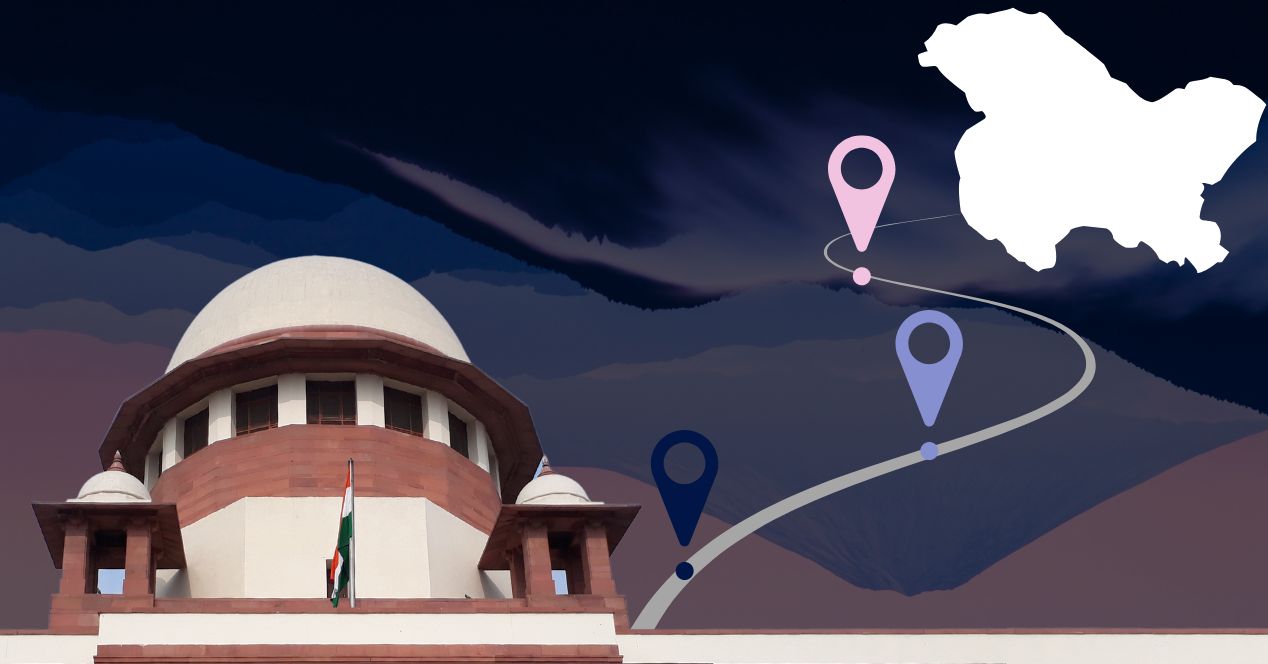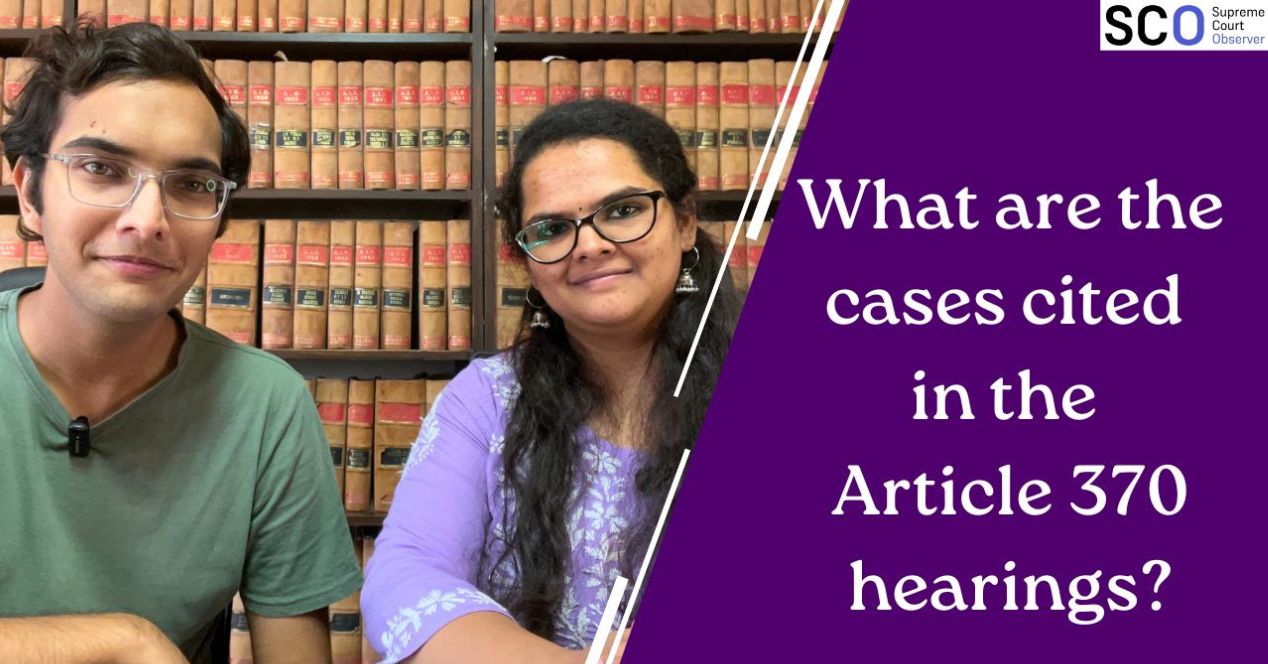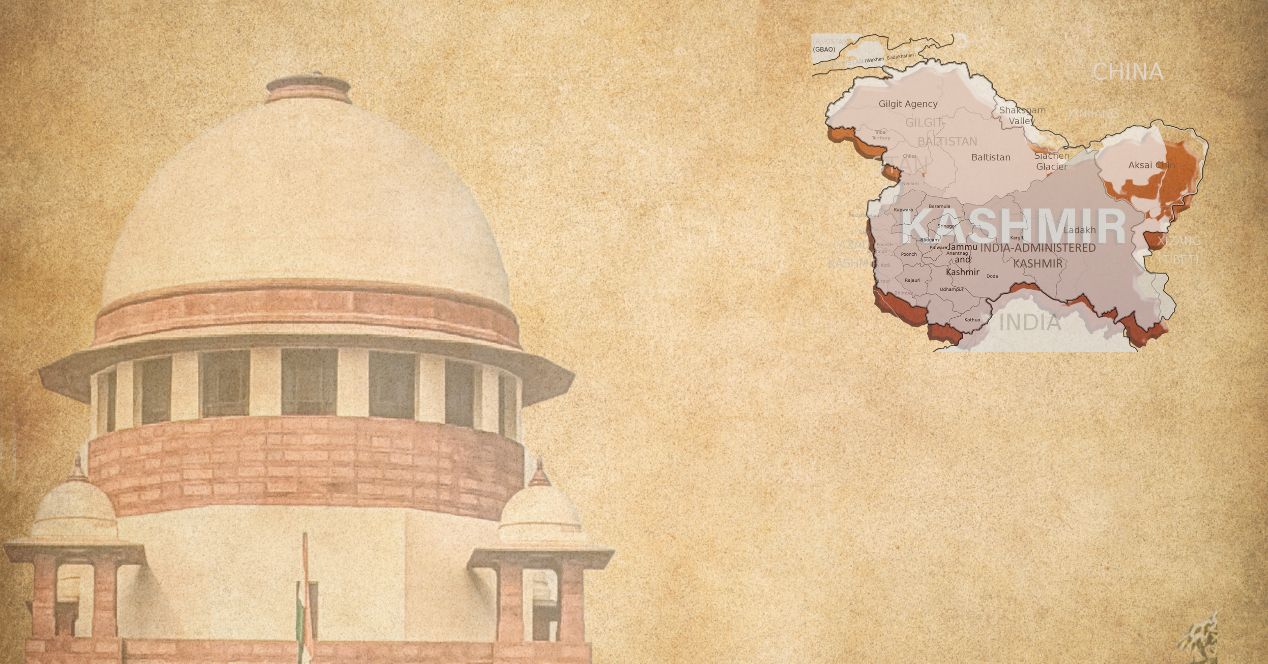Channel
Challenge to the Abrogation of Article 370 | Judgement Explainer
On 11 December 2023, the Supreme Court upheld the Union's abrogation of Article 370. Our explainer covers the key issues and what was held
Gauri Kashyap: Hello everyone. I’m Gauri Kashyap.
Sai Spandana: And I’m Sai Spandana.
Gauri Kashyap: And this is SCO Explains.
Gauri Kashyap: On 11 December 2023, the five senior-most judges of the Supreme Court upheld the abrogation of Article 370, which is a constitutional provision that granted special status to Jammu and Kashmir. In this episode, we break down the Supreme Court’s judgement.
Sai Spandana: A five-judge Constitution Bench comprising Chief Justice D.Y. Chandrachud, with Justices S.K. Kaul, Sanjiv Khanna, B.R. Gavai and Surya Kant held that Article 370 was a temporary provision and that Jammu and Kashmir does not enjoy sovereignty. And that the President had unilateral powers to revoke Jammu and Kashmir’s special status as a full and final step in integration of the state to India.
Gauri Kashyap: Three opinions were written in this judgement. Chief Justice D.Y.Chandrachud led the majority on behalf of Justices B.R. Gavai and Surya Kant. Justice S.K. Kaul authored a separate concurring opinion and Justice Sanjiv Khanna concurred with the judgments of the CJI and Justice Kaul.
Sai Spandana: Let’s now dive into the individual questions that the court answered.
Gauri Kashyap: CJI Chandrachud held that Jammu and Kashmir did not retain “internal sovereignty.” He explained that every state enjoys a certain degree of autonomy. However, this was simply a symbol of the asymmetric federal structure of India and not an indication that states retained sovereignty. The special status granted to J&K was simply a higher degree of that autonomy, not a different kind of autonomy. In J&K, he said that after Maharaja Hari Singh signed the Instrument of Accession, the state became completely integrated with India. Further, the Chief Justice held that the proclamation by Yuvaraja Karan Singh where he accepted the supremacy of the Constitution of India, all sovereignty was irrevocably surrendered.
Justice Kaul took a slightly different approach. He followed the decision of the 1959 judgement in Prem Nath Kaul v Jammu and Kashmir, where it was held that the states retained “an element of internal sovereignty.” Justice Kaul added that as the goal was always complete integration, Article 370 was temporary.
Gauri Kashyap: The court unanimously clarified that Article 370 was a temporary provision considering its historical context, wording and placement in the Constitution under part 21, which includes other temporary and transitional provisions. This was contrary to the petitioner’s argument that Article 370 had attained permanence after the Constituent assembly of Jammu and Kashmir dissolved without recommending its deletion. Justices Kaul and Khanna concurred with the Chief on this aspect.
Sai Spandana: In the course of the hearings, the petitioners had argued that under the President’s rule, the President cannot take any action that is irreversible. The Supreme Court held that the President’s rule is proclaimed only when there is failure of constitutional mechanism in the state. Their actions after the proclamation must have a reasonable nexus with the purpose of declaring the President’s rule. Judicial review, that is, the court’s scrutiny comes in only to test an action that has been taken with mala fide or ill intention. No other bar exists on the President’s exercise of powers, including the petitioner’s argument that the President cannot make irreversible decisions. Similarly, parliament also has the power to exercise both law-making and non-law-making powers of the state legislature during the President’s rule. The court saw that the state’s legislative powers are diminished if parliament can exercise both law-making and non-law-making powers of the state. However, Chief Justice Chandrachud wrote that this was necessary under President’s rule.
Sai Spandana: CJI Chandrachud held that the President has unilateral power to abrogate Article 370 without the concurrence of the Constituent Assembly under clause (3) of Article 370. Article 370, clause (3) states that “the recommendation of the Constituent Assembly of the State referred to in clause (2) shall be necessary before the President issues such a notification.” The Bench held that the President was not bound by the recommendation of Jammu & Kashmir’s Constituent Assembly and did not have the constitutional obligation to consult with the legislative assembly. If there was a mala fide intent on behalf of the president, the Court could review the actions. But in issuing CO 272 and 273, the two constitutional orders that abrogated Article 370, there was no such malicious intent by the President.
Agreeing with the Chief, Justice Kaul observed that the President could exercise these powers to fully integrate Jammu and Kashmir with the Union of India.
Gauri Kashyap: As we just discussed, the abrogation of Article 370 was done through two presidential orders, CO 272 and 273. You’ll remember that in 272, the Union amended Article 367 which is an interpretation clause of the Constitution to replace the words “Constituent Assembly” in Article 370 with “Legislative Assembly.” The Union claimed that the legitimacy of using this method came from Article 370(1)(d) which allows the President to make parts of the Indian Constitution applicable to Jammu and Kashmir.
The Court held that the President cannot use the interpretation clause to effectively make an amendment to Article 370 without following the procedure prescribed under 370 itself. So that part of CO 272, which changed the interpretation clause was held to be unconstitutional.
Sai Spandana: However, the Bench held that CO 272 as a whole was not invalid. The Chief observed that through CO 272 the President essentially made all the provisions of the Indian Constitution applicable to Jammu and Kashmir, a clear and valid exercise of power under Article 370(1)(d). The effect of this was the same as abrogating the provision using the method prescribed under Article 370 (3). Additionally, CO 272 was not mala fide because all the provisions of the Constitution were applied together to Jammu and Kashmir without a piecemeal approach.
Gauri Kashyap: In its assessment of the second constitutional order, that is, 273, the bench found it to not be unconstitutional because it was the culmination of 70 years of collaborative efforts to fully integrate Jammu and Kashmir into India. The cumulative effect of these two orders, which is to have the Constitution of India fully applicable to Jammu and Kashmir, the constitution of Jammu and Kashmir itself was now held to be inoperative.
Sai Spandana: Petitioners had argued that the J&K Reorganisation Act of 2019, which divided J&K into the Union Territories of Jammu and Kashmir and Ladakh, was unconstitutional. They argued that first, CO 272 took away the need for the approval of the J&K Legislative Assembly to reorganise the territory. Second, the 2019 Reorganisation Act changes the character of the State by “reducing it to a union territory.” On the first issue, the court held that the opinion of the legislature for reorganising a state is not binding on the Union Parliament and is just “recommendatory.” They held that the act cannot be unconstitutional on procedural grounds as the state legislatures’ concurrence does not bind the Union.
Gauri Kashyap: The Court, however, steered clear of analysing the constitutionality of the Reorganisation Act itself, especially in light of assurances from the Solicitor General Tushar Mehta, that statehood to Jammu and Kashmir will be restored soon. In the context of Ladakh, the Court upheld the validity of the decision to carve out Ladakh as a separate Union Territory under Article 3(a). The question of reducing a state into a Union Territory, which is what happened with J&K, was left unanswered.
Sai Spandana: The Court, however, was sure to direct the Election Commission of India to conduct elections in the State Legislative Assembly of Jammu and Kashmir by 30th September 2024.
Gauri Kashyap: In the concluding pages of his judgement, Justice Kaul penned an emotional epilogue. He recommended that the Union set up a “truth and reconciliation Commission”, just like South Africa did in its post-apartheid era, to address the human rights violations perpetrated by both state and non-state actors in Jammu and Kashmir.
Sai Spandana: This brings us to the conclusion of our explainer. Do let us know what your thoughts are on the judgment. We at SCO have broken down the 476-page judgement in our summary and matrix. Make sure you check them out. As always, stay tuned to SCObserver for more stories from the Supreme Court.




